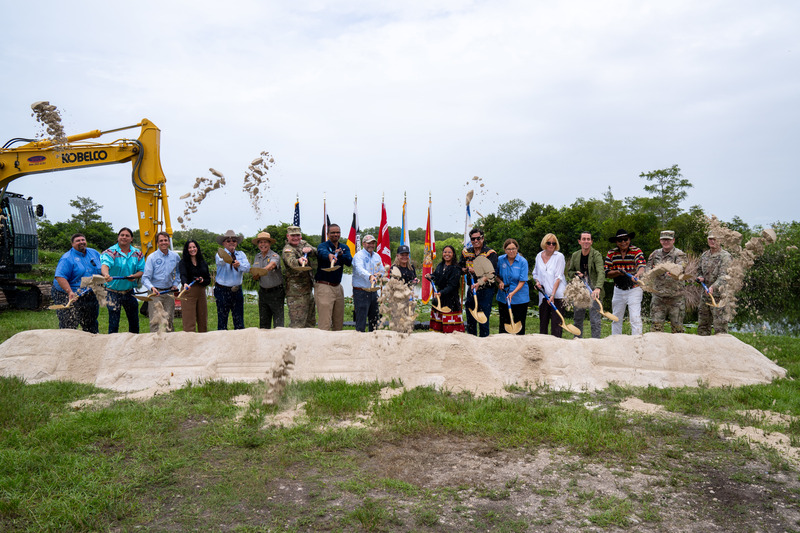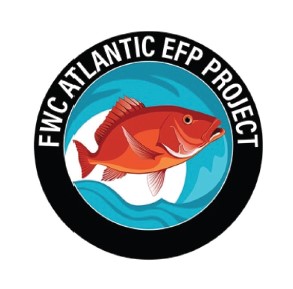By CHARLETTE ROMAN
The South Florida Water Management District (District) is celebrating our 75th Anniversary this year! The District is highlighting our continued commitment to ensuring our regional flood control and water management system operates smoothly and efficiently to safeguard our water resources.
The District operates and maintains one of the largest flood control and water management systems in the world. Central and Southern Florida’s regional system of canals, levees, pump stations and other critical infrastructure is vital to protecting water supplies and providing flood control for over nine million people.

In 1948, the U.S. Congress adopted legislation creating the Central and Southern Florida (C&SF) Project, the largest civil works project in the country. Construction began the next year and continued over 20 years as the U.S. Army Corps of Engineers built the massive flood control plumbing system stretching from just south of Orlando to Florida Bay.
On June 2, 1949, under Florida Governor Fuller Warren, the State Legislature created the Central and Southern Florida Flood Control District, the predecessor agency to the District, to manage the C&SF Project.
Today, 75 years after the creation of the Central and Southern Florida Flood Control District, the District continues to operate and maintain Central and Southern Florida’s regional water management system to effectively manage and safeguard our water resources, now and into the future. The flood control system moves approximately 20 million acre-feet of water per year.
Using state-of-the-art technology, District water managers monitor the weather around the clock to determine the optimal operation of hundreds of control structures located from Orlando to the Florida Keys. Our dedicated team of employees is working every day to manage and maintain:
- 2,175+ miles of canals
- 2,130+ miles of levees/berms
- 915+ water control structures
- 90+ pump stations
- Approx. 3,537 hydrological monitoring stations at more than 687 flow sites, including 201 rain gauges and 22 weather stations.
The District continues to make significant infrastructure adaptation investments to carry out its mission of safeguarding and restoring Central and Southern Florida’s water resources and ecosystems, protecting communities from flooding, and ensuring an adequate water supply for all of South Florida’s needs.
Recently, the District, the U.S. Army Corps of Engineers (USACE), Miccosukee Tribe of Indians of Florida, and the Seminole Tribe of Florida celebrated the groundbreaking of the first major feature of the Western Everglades Restoration Project (WERP), the L-28 South Culverts.
The new culverts are part of the Comprehensive Everglades Restoration Plan (CERP) and will restore and reconnect Water Conservation Area 3A with Big Cypress National Preserve and Lostmans Slough. This project is located in an area of South Florida where Water Conservation Area 3, Big Cypress National Preserve and Everglades National Park as well as the Miccosukee Alligator Alley Reservation all intersect.
The goal of installing these culverts is to improve the timing and distribution of water to re-establish ecological connectivity and restore the natural hydrologic conditions in Big Cypress National Preserve and western Everglades National Park.

At the end of May here on the west coast, the District and the USACE, along with many state officials and stakeholders, celebrated the completion of an important component of the Picayune Strand Restoration Project. The plugging of a major canal, the Faka Union Canal, is now complete, marking another milestone on this project. It was one of the final components needed to accomplish the Picayune Strand Restoration Project’s goal of restoring the natural hydrology of over 55,000 acres of native wetlands and uplands on Florida’s Southwest coast. Three out of the four canals are now plugged.
This restoration project is expected to result in improved flows of water into Collier Seminole State Park, Ten Thousand Islands National Wildlife Refuge and the Rookery Bay National Estuarine Research Reserve. Some of the expected environmental benefits include:
- Restoration of wetlands that are already making a significant contribution to the landscape of Southwest Florida
- Restored and enhanced habitat for fish and wildlife, including the Florida Panther
- Reduced drainage of adjacent sensitive ecosystems
- Improved aquifer recharge to protect underground water supplies and prevent saltwater intrusions
- Reduced freshwater releases/improved health of downstream estuaries

In 2009, the Picayune Strand Restoration Project was the first Project Partnership Agreement that the USACE executed with the District as part of the Comprehensive Everglades Restoration Plan (CERP). The project is expected to be completed by the end of 2025 with the plugging of the fourth canal. We are so close to completing this important Everglades project which will restore the hydration and ecosystem of this incredible national treasure. The Picayune Strand Restoration Project is near and dear to my heart, and I am so proud of the progress we are making on this project and all of the projects in South Florida.
The Lake Okeechobee System Operating Manual (LOSOM) Record of Decision was signed in August 2024. The USACE updated the Lake Okeechobee operations manual to define operations for the Lake Okeechobee regulation schedule. New lake level management will be implemented in a manner that reduces harmful discharges into the coastal estuaries, sends more water south to benefit the environment and better meets the needs of the communities.
“Historic. Collaborative. Important,” said South Florida Water Management District Board Chairman Chauncey Goss in a statement. “We have worked for five years to get to the record of decision, and we are finally here. I’m proud of the South Florida Water Management District staff who worked with the team at the U.S. Army Corps of Engineers to ensure the Lake Okeechobee System Operating Manual (LOSOM) was implemented in a manner that reduces harmful discharges into our estuaries, sends more water south to benefit the environment and meets the needs of our communities. I want to thank everyone who engaged in this process over the years, especially all of our stakeholders and members of the public who contributed to its development every step of the way.”
The District has local partners, state partners, federal partners, tribal nations, stakeholders, members of the public, contractors and more all working together. We are continuing to see both small and incredible large-scale projects come on-line; and the beauty of it is…Everglades restoration is working!
New data demonstrates the success of restoration and resiliency projects across our region – proving recent investments and momentum are working. Record water flows and water depths in the Everglades coupled with rainfall demonstrated that restoration can support healthy salinity levels in Florida Bay. Balanced salinity supports sea grass and spawning fish. The graphic below shows water depths over the years in two key locations, Shark River Slough and Taylor Slough. The improvements in water depths over the past three years demonstrate that restoration projects and operations work well together to nourish the Everglades and send water south to support the health of Florida Bay.
I am honored to be a South Florida Water Management District Governing Board Member as we work on the largest ecosystem restoration effort on Earth. This is truly the “Golden Age of Everglades Restoration,” and with your help and support, we can keep this momentum moving forward for generations to come.
Charlette Roman is Chair of the Big Cypress Basin Board and Governing Board Member of the South Florida Water Management District
Visit our website at SFWMD.gov to learn more about the work[PG1] of the South Florida Water Management District. The District’s November Governing Board Meeting is scheduled for 9 a.m. Thursday, Nov. 14, 2024, in Hendry County at the John Boy Auditorium located at 1200 W.C. Owen Avenue, Clewiston, FL 33440. If you would like to attend, please visit SFWMD.gov/Meetings for more information.























